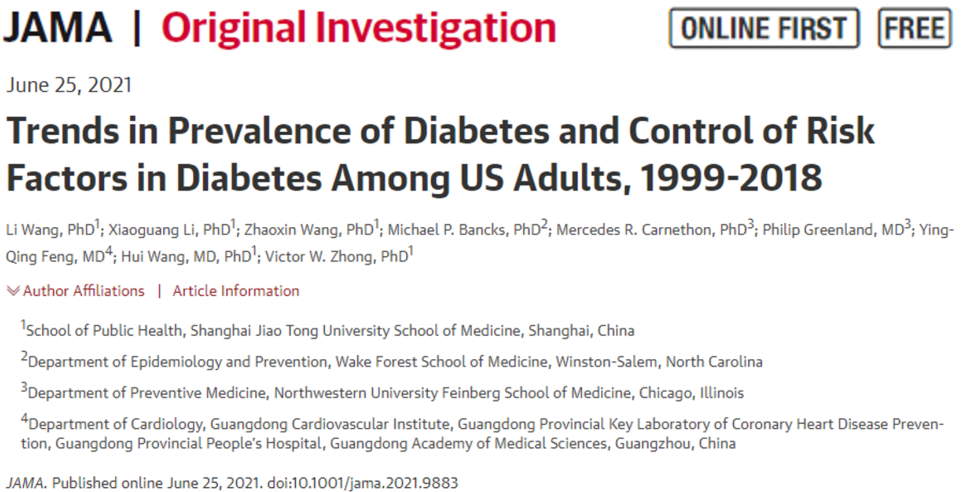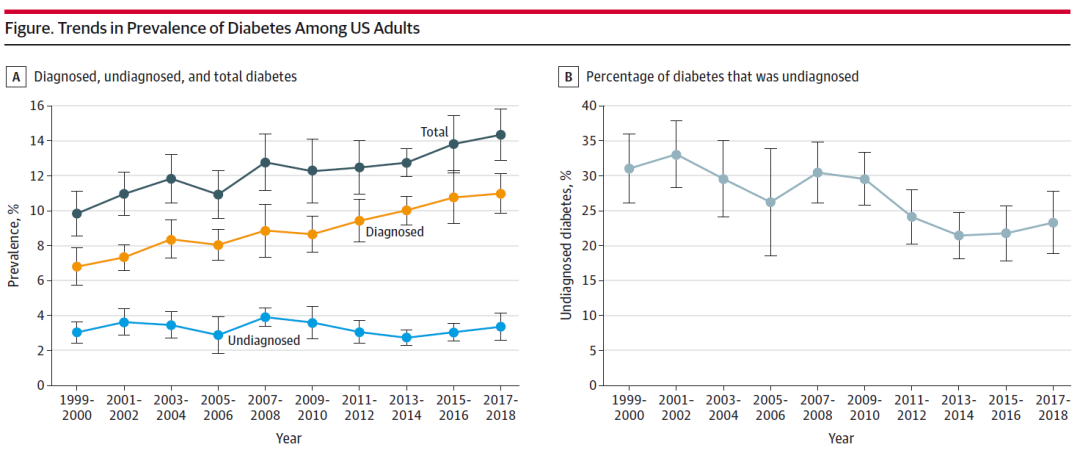
In the past three decades, the prevalence of diabetes has grown rapidly in most countries, including high, middle and low-income countries, forming a global epidemic of diabetes. Diabetes is one of the leading causes of disability and deaths worldwide and one of the leading causes of cardiovascular disease, the world's leading cause of death. In 2015, diabetes caused a global economic burden of $1.3 trillion; by 2030, it will increase to more than $2 trillion. Therefore, continuous monitoring of the prevalence trend of diabetes and the control of cardiovascular risk in patients with diabetes have significant public health and clinical significance.
Based on the severe situation of global diabetes prevention and control, he School of Public Health, Shanghai Jiao Tong University School of Medicine has carried out work around "digital active health and chronic disease prevention and control", formed a joint research team of "diabetes prevention and control". This team carried out health big data mining and disease risk assessment, and with the help of AI technology to provide digital support for multi-dimensional intervention and precise health management such as diet, medicine and lifestyle for diabetic people. The joint team of Wang Hui and Zhong Wenze first started from the public database, based on the data of continuous cross-sectional questionnaire surveys, physical examinations and biochemical indicators spanning 20 years, systematically studied the prevalence and trend of adult diabetes in the United States in the past 20 years, finally published an article in JAMA on June 25, 2021.

The findings suggest that the prevalence of diabetes among adults in the United States has increased steadily over the past 20 years, from 9.8 percent in 1999-2000 to 14.3 percent in 2017-2018. Among them, the phenomenon of undiagnosed diabetes in last 20 years is very common. Previous studies have tended to treat BMI≥30 as the same type of obese population, but this study showed that the prevalence of diabetes in severely obese people with a BMI of ≥ 40 was 37%, much higher than the prevalence of diabetes in class I obese people with a BMI of 30-34.9 at 16%. These research results have important guiding significance for the accurate stratification and prevention and control of diabetes risk.

This study further evaluates the control of diagnosed diabetic patients, and the results show that the control of adult diabetic patients in the United States in the past 20 years is generally poor, especially young diabetic patients, who will be the primary focus of accurate prevention and control in the future. The above reality that the task of diabetes prevention and control in the United States is still very arduous has brought many enlightenments to the prevention and management of diabetes in China.
The results of the study suggest that the situation of diabetes prevention and control has not improved significantly in the past two decades, and even has a tendency to deteriorate in some regions and some populations, and there are significant differences in age and race. The reasons for this situation are manifold, and in the future, it is necessary to pay attention to the precise prevention and treatment of diabetes from multiple dimensions.
The research team also pointed out that the situation of diabetes prevention and control in China is also extremely severe. Data show that in 1980, the prevalence of diabetes among adults in China was less than 1%, and now it is close to 13%, and there are currently nearly 130 million people with diabetes, accounting for about a quarter of global cases. Diabetes has become a major public health problem that seriously endangers national health and brings a heavy economic burden to society. In the future, it is necessary to strengthen the long-term continuous monitoring of the individualized indicators of Chinese groups of diabetic patients, so as to provide a scientific basis for the formulation of health policies, resource allocation, and evaluation of the progress of prevention and control work in China.
The research team will use the advantages in nutrition, epidemiology, basic research and translational research in public health, medical informatics, bioinformatics, AI, etc., relying on the "digital active health and chronic disease prevention and control" work from School of Public Health, to carry out a series of multi-dimensional and multi-level Chinese diabetes and cardiovascular disease research, which will propose precise prevention and health management solutions suitable for Chinese people. At the same time, it also makes full use of the team's international background to carry out high-level and influential international research, providing original results and theoretical basis for the global prevention and control of high-incidence chronic diseases such as diabetes, cardiovascular and cerebrovascular diseases.




